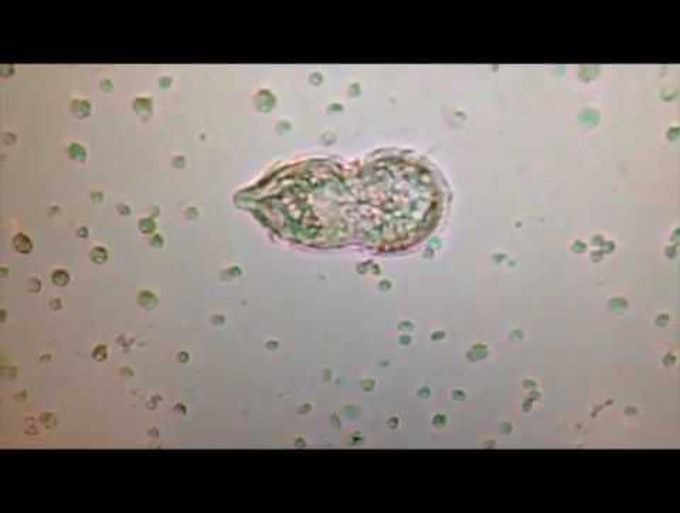


Miracidium in Urine Sample from Child with Gross Hematuria
A previously healthy 8-year-old boy presented with 2 weeks of recurrent terminal gross hematuria. Two years earlier, after he had been swimming near an irrigation dam in Ghana, painless terminal hematuria developed, which subsequently resolved. Urinalysis revealed microscopic hematuria with a red-cell count of more than 250 per cubic millimeter (normal range, 0 to 5). Urine microscopy revealed oval eggs (approximately 110 to 170 μm in length by 50 to 70 μm in width) with a terminal spine and transparent shell that were characteristic of Schistosoma haematobium. Miracidia, free-swimming larvae (approximately 200 μm in length) that are usually found in environmental water (e.g., lakes and rivers), were also seen (see video). S. haematobium is endemic in freshwater bodies in many areas of sub-Saharan Africa, and infection can occur after swimming in this water. Urinary schistosomiasis occurs after the release of eggs by adult worms living in the bladder and pelvic venous plexus. Eggs penetrate the bladder wall and ureters, causing granulomas and fibrotic nodules that lead to hematuria and chronic inflammation. Left untreated, urinary schistosomiasis can cause ureteric obstruction, secondary urinary tract infections, squamous-cell carcinoma of the bladder, and ultimately, renal failure. The patient received praziquantel, with resolution of hematuria and clearance of eggs and miracidia at follow-up 8 weeks later.

